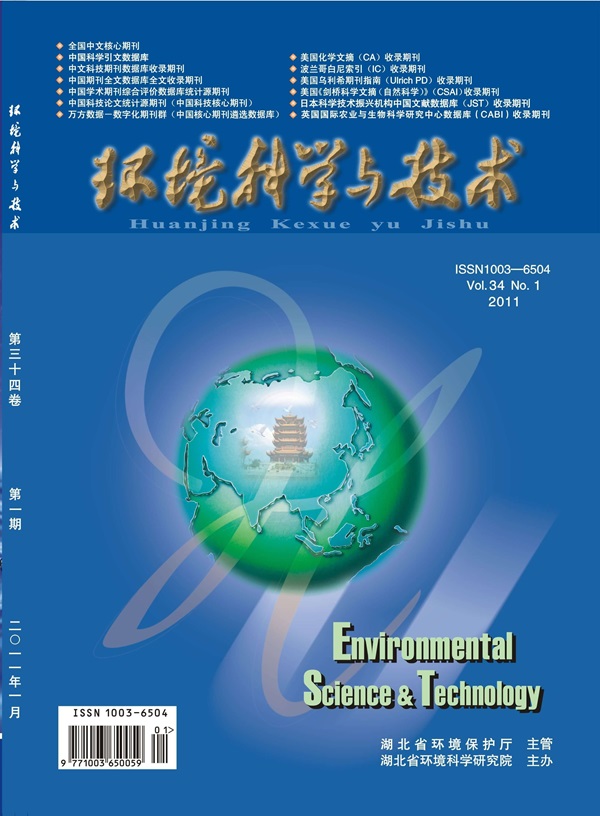Opposing Visual Impairments Induced by Structurally Similar Organophosphate Flame Retardants TPHP and CDP in Zebrafish Larvae
IF 10.8
1区 环境科学与生态学
Q1 ENGINEERING, ENVIRONMENTAL
引用次数: 0
Abstract
Vision is the primary sensory function for most animals and is also a sensitive toxic target of environmental pollutants. A new class of organophosphate flame retardants (OPFRs) termed emerging OPFRs (eOPFRs) with limited toxicological information is rapidly developed into the substitutes of traditional OPFRs. In this study, we investigated the visual toxicity of triphenyl phosphate (TPHP, one traditional OPFR) and cresyl diphenyl phosphate (CDP, one emerging OPFR) on zebrafish larvae at environmentally relevant concentrations (3 and 30 nM). After 5 days of exposure, an opposite toxicity was found between the two OPFRs, manifested in the light perception and the gene expressions of visual opsins. CDP caused a weak reaction to light and overall inhibition of opsin expression (0.7- to 0.8-fold) in the larvae, while TPHP tended to stimulate these events (1.2- to 2.4-fold). Besides, we identified a key transcription factor, tbx2a, that was significantly disrupted in both OPFRs’ exposure. The differing ways in which both OPFRs bind to Tbx2a may be the reason behind their opposite effects. These findings provided new clues for the toxicological mechanisms of OPFRs and revisited the question regarding safe substitutes for those emerging contaminants.

结构相似的有机磷阻燃剂TPHP和CDP对斑马鱼幼鱼视觉损伤的拮抗作用
视觉是大多数动物的主要感觉功能,也是环境污染物的敏感毒性靶标。一类新的有机磷阻燃剂(OPFRs)被称为新兴的有机磷阻燃剂(eOPFRs),其毒理信息有限,正迅速发展成为传统有机磷阻燃剂的替代品。在这项研究中,我们研究了三苯基磷酸(TPHP,一种传统的OPFR)和甲酰二苯基磷酸(CDP,一种新兴的OPFR)在环境相关浓度(3和30 nM)下对斑马鱼幼虫的视觉毒性。暴露5天后,两种OPFRs的毒性相反,表现在光感知和视蛋白基因表达上。CDP对光的反应较弱,对视蛋白的表达有全面抑制(0.7 ~ 0.8倍),而TPHP对这些反应有刺激作用(1.2 ~ 2.4倍)。此外,我们发现了一个关键的转录因子tbx2a,在两种opfr暴露中都被显著破坏。这两种opfr与Tbx2a结合的方式不同,这可能是它们产生相反效果的原因。这些发现为OPFRs的毒理学机制提供了新的线索,并重新审视了这些新出现的污染物的安全替代品问题。
本文章由计算机程序翻译,如有差异,请以英文原文为准。
求助全文
约1分钟内获得全文
求助全文
来源期刊

环境科学与技术
环境科学-工程:环境
CiteScore
17.50
自引率
9.60%
发文量
12359
审稿时长
2.8 months
期刊介绍:
Environmental Science & Technology (ES&T) is a co-sponsored academic and technical magazine by the Hubei Provincial Environmental Protection Bureau and the Hubei Provincial Academy of Environmental Sciences.
Environmental Science & Technology (ES&T) holds the status of Chinese core journals, scientific papers source journals of China, Chinese Science Citation Database source journals, and Chinese Academic Journal Comprehensive Evaluation Database source journals. This publication focuses on the academic field of environmental protection, featuring articles related to environmental protection and technical advancements.
 求助内容:
求助内容: 应助结果提醒方式:
应助结果提醒方式:


